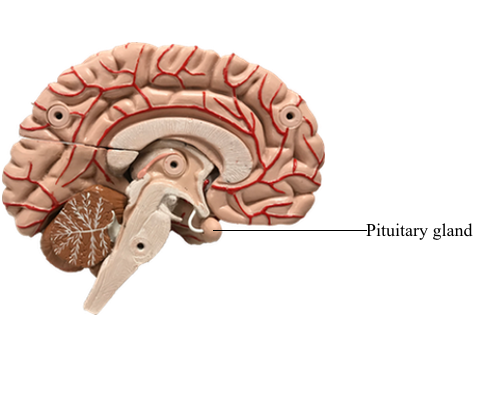Main Model

Diencephalon : 25 Pituitary gland

Inferiorly, the hypothalamus is continuous with the pituitary gland (located in the sella turcica and covered by the diaphragma sellae) by way of the infundibulum and the hypophysial stalk. The infundibulum is located immediately caudal to the optic chiasm, is somewhat funnel shaped (hence its name), and contains a small portion of the third ventricle, the infundibular recess. The infundibulum continues into the pituitary by a stalk of tissue that is sometimes called the hypophysial stalk. This stalk passes through an opening in the diaphragma sellae.
The pituitary originates from two sources and directions. The posterior lobe (pars nervosa) arises as an outpocketing of the inferior surface of the developing diencephalon. The anterior lobe (adenohypophysis) arises as an infolding of the ectodermal lining of the roof of the developing oral cavity (the stomodeum) and is commonly referred to as the Rathke pouch. The smaller portions of the pituitary, the tuberal part (pars tuberalis) and the intermediate part (pars intermedia), also originate in association with the anterior lobe. As development progresses, these separate structures join to form the pituitary of the adult.
Although the pituitary is well protected in the sella turcica, it is, at the same time, subject to a variety of potential insults (tumor, vascular, surgical) in this confined location. In addition, the extension of the hypophysial stalk and infundibulum through the diaphragma sellae is a vulnerable relationship. For example, trauma to the head may result in a shearing of the stalk and the eventual development of diabetes insipidus.